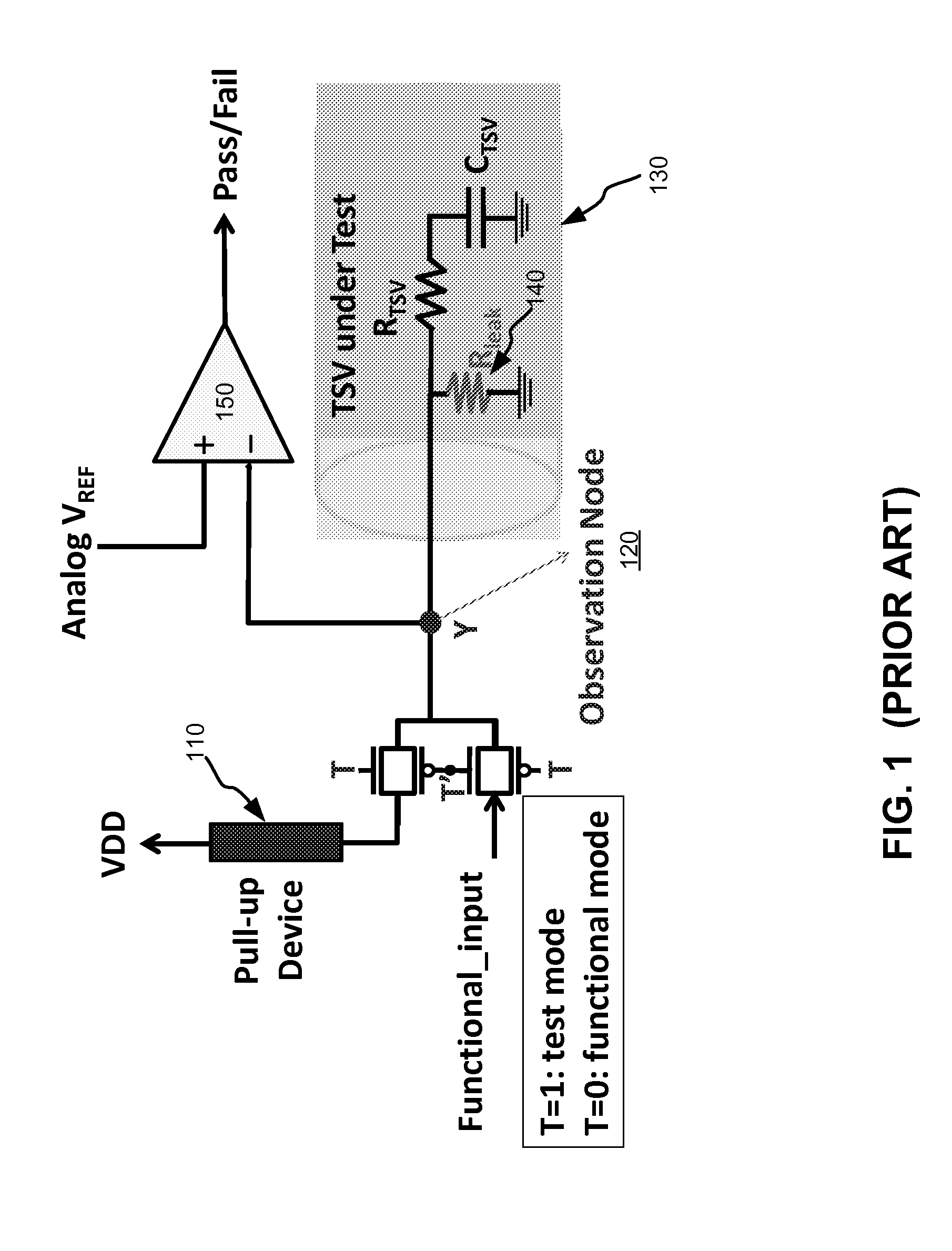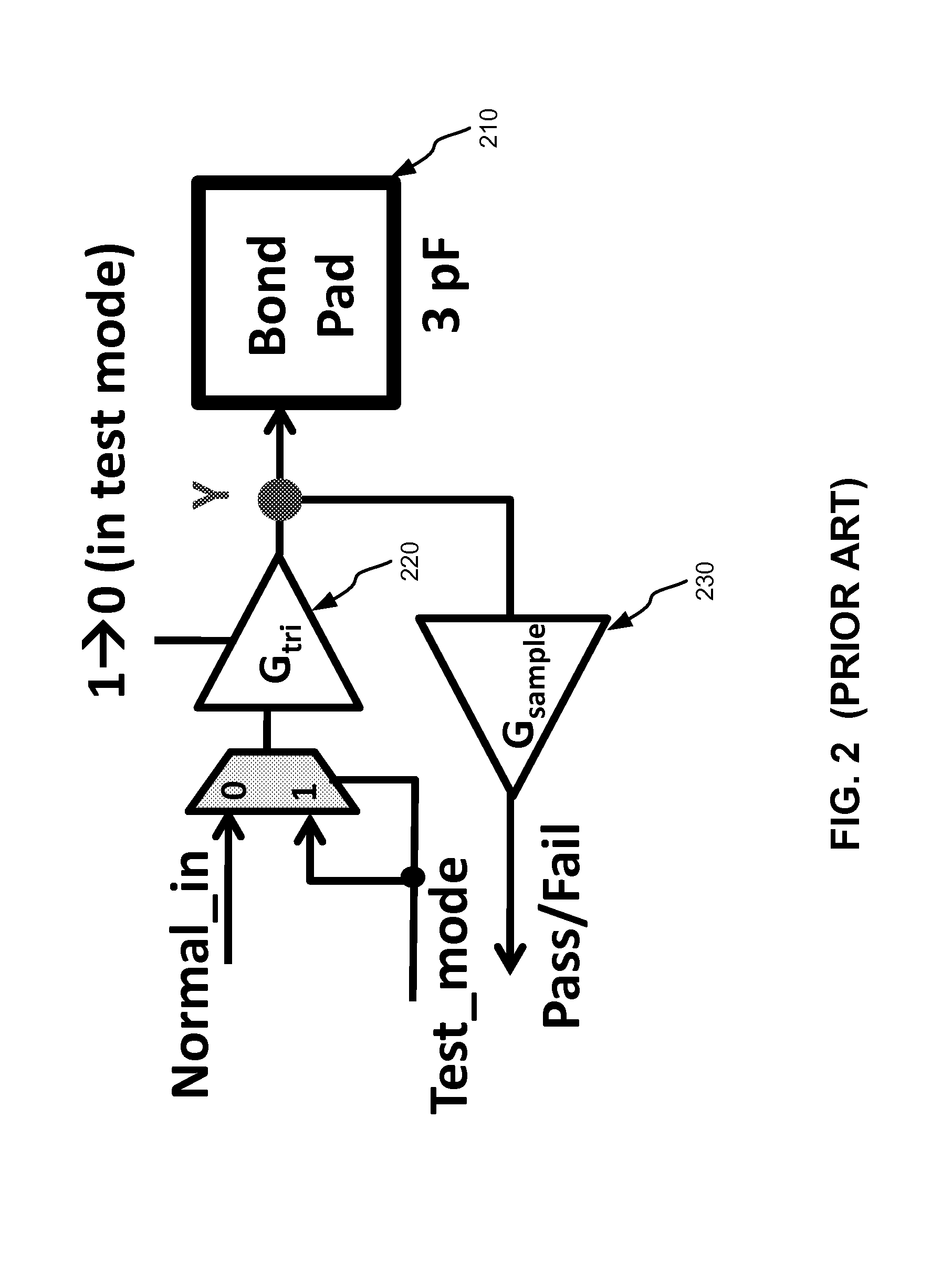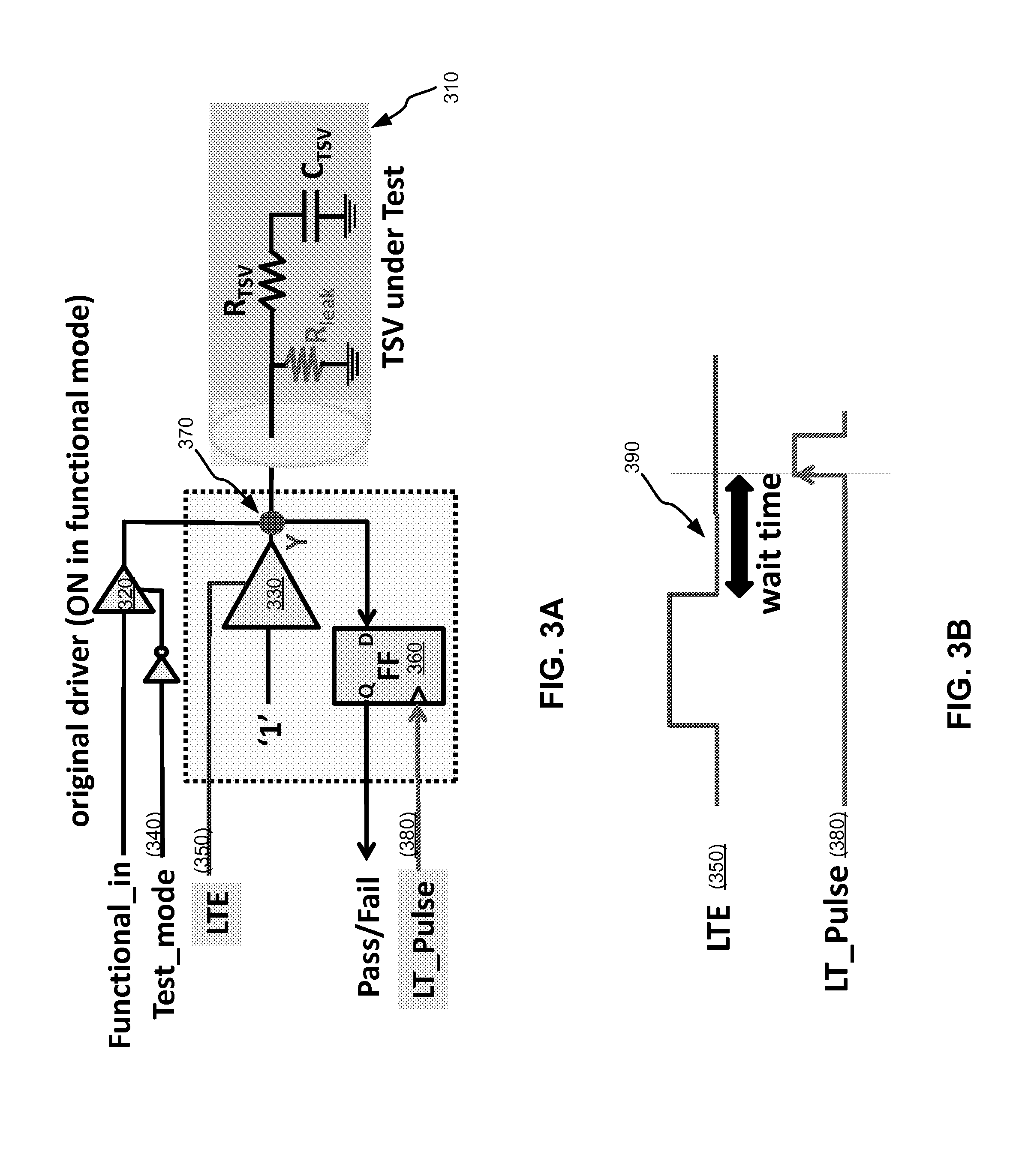Programmable Leakage Test For Interconnects In Stacked Designs
a technology of interconnects and leakage tests, applied in error detection/correction, detecting faulty computer hardware, instruments, etc., can solve problems such as increasing power consumption along the way, limiting chip stacking, and affecting signal speed
- Summary
- Abstract
- Description
- Claims
- Application Information
AI Technical Summary
Benefits of technology
Problems solved by technology
Method used
Image
Examples
Embodiment Construction
[0034]Various aspects of the present invention relate to techniques of testing interconnects in stacked designs for leakage defects. Two examples of interconnects are TSVs for three-dimensional designs and interposers for two-and-half-dimensional designs. In the following description, numerous details are set forth for the purpose of explanation. However, one of ordinary skill in the art will realize that the invention may be practiced without the use of these specific details. In other instances, well-known features have not been described in details to avoid obscuring the present invention.
[0035]Some of the techniques described herein can be implemented in software instructions stored on one or more non-transitory computer-readable media, software instructions executed on a processor, or some combination of both. As used herein, the term “non-transitory computer-readable medium” refers to computer-readable medium that are capable of storing data for future retrieval, and not propa...
PUM
 Login to View More
Login to View More Abstract
Description
Claims
Application Information
 Login to View More
Login to View More - R&D
- Intellectual Property
- Life Sciences
- Materials
- Tech Scout
- Unparalleled Data Quality
- Higher Quality Content
- 60% Fewer Hallucinations
Browse by: Latest US Patents, China's latest patents, Technical Efficacy Thesaurus, Application Domain, Technology Topic, Popular Technical Reports.
© 2025 PatSnap. All rights reserved.Legal|Privacy policy|Modern Slavery Act Transparency Statement|Sitemap|About US| Contact US: help@patsnap.com



